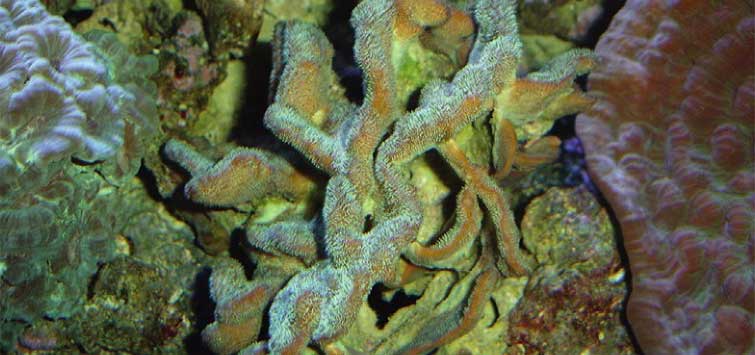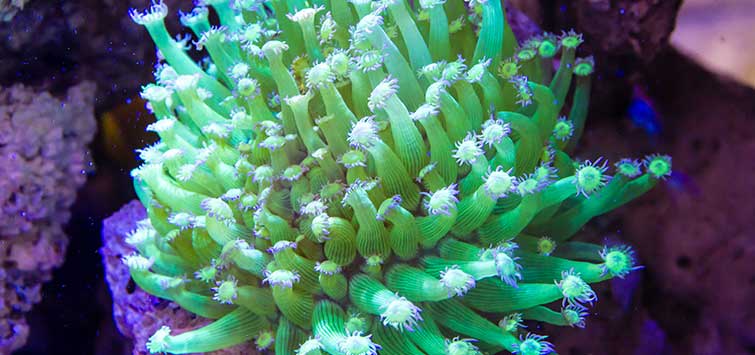Psammocora contigua
Common Names: Cat’s paw coral, pillar coral, branched sandpaper coral, shoehorn coral
Phylum: Cnidaria
Class: Anthozoa
Order: Scleractinia
Family: Siderastreidae
Range: Indo-West Pacific and Red Sea, including western, northern, and eastern coasts of Australia east to Tahiti, and north to southern Japan
Natural Environment: This is a fairly common photosynthetic stony coral found in most shallow reef environments, especially where soft sand accumulates. It tends to form massive colonies with mixtures of flattened branches, columns, and/or irregular nodules.
Water Requirements: Calcium 380 to 430 ppm, alkalinity 3.5 meq/l, pH 8.1 to 8.2, specific gravity 1.024 to 1.026, Mg approx. 1270 ppm, phosphate < .015 ppm, and a temperature range of 75° to 83°F (24° to 28°C).
Captive Care
Although fairly common in nature, it is only occasionally available in the trade. When found in local shops, it is sometimes misidentified as Porites sp. This is one of the easier-to-maintain photosynthetic stony corals--most experience with this species has proven that it's not overly fussy about water quality, available light, or even water movement. It seems to do well under fluorescent or metal halides of various intensities, and slow-to-moderate water movement seems to suit it quite nicely.
It also appears that this hardy species is quite slow-growing, and that special direct feeding is not required to keep it healthy. Though it isn't very colorful, this species seems to be a good stony coral for beginning reef aquarists, as it does well in average water quality and requires no special care other than placing it away from aggressive corals. Therefore, when available, this coral can adequately fill in many of those lower-aquarium areas where light and water movement are not as good as they are at higher levels.
Should increased growth be desired, direct feeding during daylight hours when its polyps are visible can be attempted. I've never tried hand-feeding this pecies, but zooplankton-type products such as rotifers and newly hatched brine shrimp may be accepted for enhancing its growth. Nevertheless, for general health and growth, average water conditions and lighting will suffice.

.png?h=595&iar=0&w=2781&hash=5FD5E69473BCC22199FBFA2FB71B6033)



